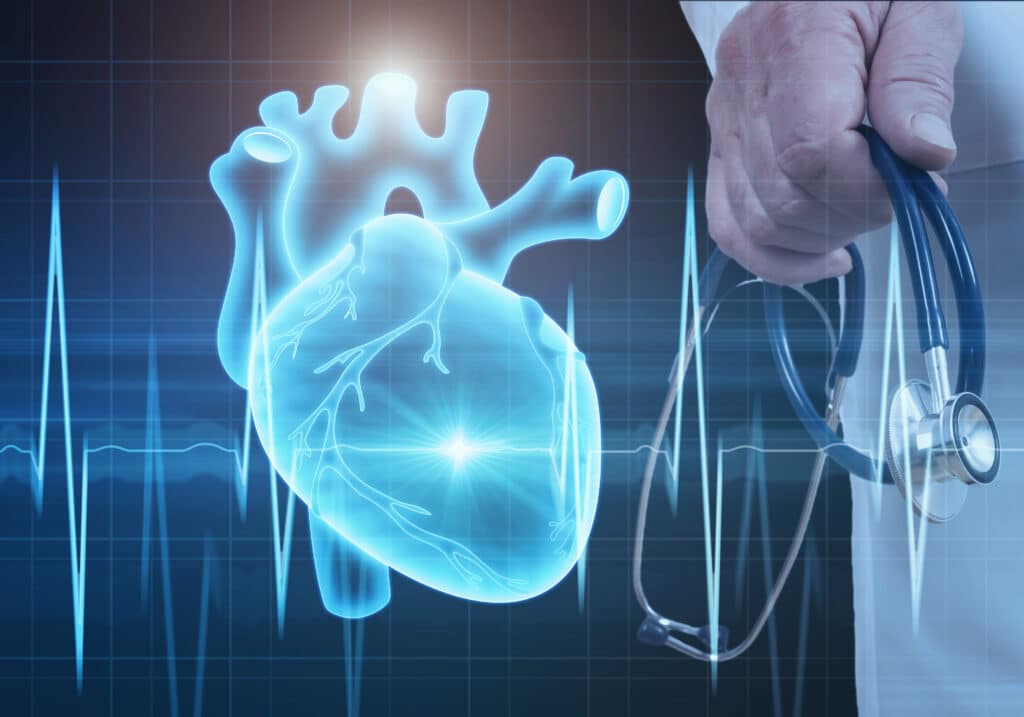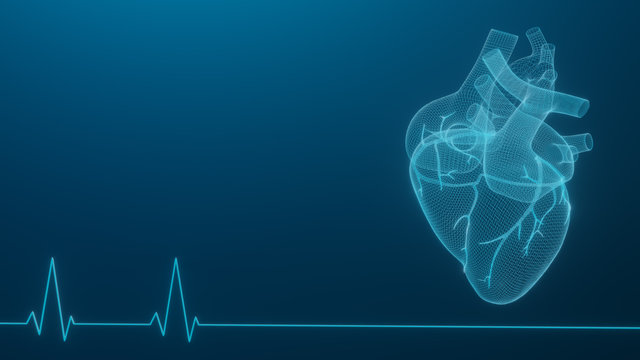How Dr Garcia's office guides you to better cardiovascular care
How Dr Garcia's office guides you to better cardiovascular care
Blog Article
Recognizing the Significance of Cardiology in Modern Medical Care Services
Cardiology plays a vital duty in modern-day medical care, specifically as heart illness remains to be the leading root cause of mortality worldwide. Breakthroughs in diagnostics and treatment have transformed patient care, allowing earlier interventions and boosted results. The change in the direction of precautionary cardiology encourages people to manage their wellness proactively. As modern technology remains to evolve, the combination of cutting-edge solutions may further redefine cardiology's effect on public health and wellness, prompting a better evaluation of arising fads and their implications.
The Prevalence of Heart Illness and Its Influence on Public Health
Although heart problem continues to be the leading reason of fatality worldwide, its effect extends far past specific people to impact public wellness systems and economies. The high frequency of heart problem places a considerable stress on healthcare sources, necessitating increased funding for avoidance, rehabilitation, and therapy programs. Public health and wellness initiatives have to attend to risk aspects such as obesity, cigarette smoking, and sedentary way of livings, which add greatly to the increasing incidence of heart conditions.Moreover, the financial concern connected with heart condition is immense, including not just direct medical prices yet likewise indirect costs connected to lost efficiency and premature death. Communities deal with obstacles in handling these expenses, often leading to differences in health care access and end results. As the population ages and lifestyle-related risks proceed to intensify, the seriousness for reliable cardiology interventions becomes paramount. Dealing with heart disease is not just a matter of specific health and wellness but additionally an essential public health top priority.
Advances in Cardiac Diagnostics and Imaging Techniques
Recent improvements in heart diagnostics and imaging techniques have revolutionized the area of cardiology, boosting the ability to discover and monitor heart problem. Techniques such as heart MRI, CT angiography, and echocardiography have actually become significantly advanced, providing thorough photos of heart structures and features. These modalities enable the very early recognition of problems like coronary artery condition, heart failing, and valvular disorders.Moreover, advancements in non-invasive diagnostics, such as wearable modern technology and remote tracking devices, have equipped individuals and doctor. These tools help with real-time monitoring of heart rhythms and other essential indicators, bring about prompt treatments. Additionally, expert system is being integrated into imaging analysis, enhancing accuracy and efficiency in medical diagnosis.
Innovations in Treatment Options for Heart Issues
Current developments in cardiology have actually caused significant developments in therapy choices for heart disease. These include innovative medical methods that enhance step-by-step results and emerging medicines that provide brand-new avenues for therapy. As the field evolves, these developments play an important role in enhancing person treatment and end results.
Advanced Surgical Techniques
Innovations in medical techniques have actually changed the landscape of cardiology, supplying brand-new hope for clients with heart disease. Minimally intrusive treatments, such as catheter-based interventions, have greatly decreased recuperation times and hospital keeps. Strategies like robotic-assisted surgery enhance precision, enabling doctors to navigate complex anatomical frameworks with higher accuracy. Developments in imaging innovation promote real-time visualization during procedures, improving outcomes. Transcatheter aortic shutoff substitute (TAVR) exemplifies a breakthrough in dealing with aortic stenosis, making it possible for valve substitute without open-heart surgical treatment. Additionally, hybrid methods that incorporate surgical and catheter-based approaches give tailored options for numerous cardiac problems. These advanced medical methods not only enhance client safety however likewise increase therapy options, underscoring the vital role of development in modern cardiology techniques.
Arising Therapies and drugs
As the landscape of cardiology proceeds to advance, arising medications and therapies play a pivotal role in boosting treatment choices for heart problems. Technologies such as novel anticoagulants and progressed lipid-lowering agents have actually transformed the administration of cardio conditions, considerably minimizing patient morbidity and death. Additionally, the growth of gene therapies and regenerative medicine offers promising methods for dealing with problems formerly regarded incurable. Clinical trials are consistently revealing the efficiency of these treatments, pressing the limits of typical therapies. Furthermore, the assimilation of electronic health modern technologies facilitates individualized medication, permitting customized treatment plans based upon genetic and way of life aspects. Jointly, these advancements highlight the dynamic nature of cardiology, boosting patient outcomes and redefining requirements of care in modern-day healthcare.
The Function of Preventive Cardiology in Individual Care
Preventative cardiology plays a necessary role in client care by concentrating on the recognition of threat factors that add to heart condition. Through lifestyle modification approaches and very early discovery techniques, healthcare companies can efficiently minimize the occurrence of cardio events - Cardiology Jupiter. This positive approach not only improves individual end results but additionally advertises long-term health and wellness
Danger Factor Identification
While cardiovascular illness remain a leading source of morbidity and mortality worldwide, effective risk aspect recognition offers as a foundation of precautionary cardiology. Recognizing risk factors such as hypertension, hyperlipidemia, household, and diabetes background is vital for early intervention. Healthcare specialists utilize various evaluating techniques to evaluate these elements, enabling for tailored safety nets. Additionally, recognizing an individual's way of life choices, such as smoking cigarettes and physical lack of exercise, even more educates danger analyses. This detailed examination enables clinicians to create individualized care plans targeted at mitigating risks. By focusing on danger factor identification, medical care systems can boost client end results and decrease the general burden of cardiovascular diseases, eventually adding to boosted public wellness techniques and resource allowance.
Way Of Life Alteration Strategies
A wide range of researches highlights the crucial function of way of life adjustment techniques in minimizing cardio condition risk. These methods incorporate nutritional changes, enhanced exercise, smoking cigarettes cessation, and weight management. By adopting a heart-healthy diet rich in fruits, veggies, whole grains, and lean healthy proteins, people can lower cholesterol levels and blood pressure. Routine physical activity enhances the heart and boosts total cardio health and wellness. In addition, quitting smoking cigarettes significantly decreases the risk of heart condition and enhances healing rates for those with status quo. Weight administration better adds to cardio health by minimizing other risk factors such as diabetes and hypertension. Executing these way of living changes not only promotes private health however likewise functions as a cornerstone of precautionary cardiology in individual treatment.
Early Discovery Strategies
Way of life modifications significantly add to reducing cardiovascular disease risks, however they are most reliable when Your Domain Name coupled with very early discovery strategies. Precautionary cardiology emphasizes the significance of identifying potential heart concerns prior to they escalate into serious problems. Methods such as high blood pressure more tips here monitoring, cholesterol screening, and advanced imaging modern technologies like echocardiograms play essential functions in reviewing cardiovascular health and wellness. Biomarkers and hereditary testing also boost the accuracy of early discovery, enabling tailored preventative strategies. Routine cardiac threat examinations empower doctor to intervene proactively, potentially stopping cardiac arrest and strokes (Cardiology care). By integrating these very early detection approaches into regular treatment, clients can profit from timely way of life interventions and targeted treatments, inevitably improving and improving outcomes high quality of life
Integrating Technology Into Cardiology Practices
As developments in innovation remain to improve different fields, the combination of innovative tools and systems right into cardiology techniques has come to be necessary for improving individual care and results. Telemedicine platforms allow cardiologists to check clients remotely, improving accessibility to care while reducing the burden on medical care facilities. Wearable devices, such as smartwatches, make it possible for continual heart price surveillance, signaling both patients and doctors to potential problems in real-time. In addition, expert system (AI) is being made use of to examine large quantities of heart data, assisting in very early diagnosis and customized treatment strategies. Advanced imaging methods, including 3D echocardiography, enhance visualization of heart frameworks, bring about a lot more precise interventions. Electronic health and wellness records (EHRs) enhance patient information monitoring, making certain that cardiologists have prompt access to essential information. With each other, these technical developments are transforming cardiology, advertising proactive administration and improved health and wellness results for individuals with cardio conditions.
The Significance of Person Education And Learning and Engagement
Person education and interaction play an essential duty in the management of cardio health and wellness. By outfitting individuals with understanding regarding their problems, therapy click here for more options, and way of life modifications, doctor encourage people to take an energetic role in their treatment. This proactive method can result in enhanced adherence to suggested drugs, nutritional modifications, and exercise routines, inevitably reducing the risk of complications.Engagement likewise promotes a solid patient-provider relationship, motivating open interaction and depend on. When people really feel informed and entailed, they are most likely to voice issues and ask questions, which can bring about better professional end results. Additionally, instructional sources, such as workshops or electronic platforms, can enhance understanding and advertise self-management methods. On the whole, focusing on patient education and learning and engagement is crucial for improving cardio health and wellness, improving lifestyle, and lowering medical care prices connected with cardio conditions.
Future Patterns in Cardiology and Their Potential Effect

Regularly Asked Questions
What Way Of Living Adjustments Can Reduce Heart Illness Danger?
The existing question addresses way of life adjustments that can substantially reduce heart problem threat. Dr Garcia. Embracing a well balanced diet regimen, participating in regular exercise, maintaining a healthy weight, handling anxiety, and staying clear of cigarette can especially improve cardio health and wellness
Exactly How Can I Acknowledge Early Signs of Heart Troubles?
Acknowledging early signs of heart problems entails monitoring symptoms such as chest discomfort, lack of breath, tiredness, and irregular heart beat. Prompt awareness of these indicators can motivate essential medical analysis and intervention for better end results.
What Are the Differences In Between Cardiologists and Heart Surgeons?
The distinctions in between cardiologists and cardiac specialists hinge on their duties; cardiologists mostly take care of and identify heart conditions through non-invasive approaches, while cardiac doctors perform surgeries to deal with structural heart concerns. Each plays a vital, distinct function.

Exactly how Usually Should I Get My Heart Health And Wellness Checked?
The regularity of heart medical examination differs based upon specific risk elements. Normally, adults must go through analyses every one to two years, while those with status quo might call for more regular evaluations as suggested by medical care professionals.
What Role Does Genetics Play in Heart Disease Risk?
Genetics substantially influences heart condition danger, with familial patterns showing inherited problems. Details genes can incline people to high blood pressure, cholesterol problems, and other cardio troubles, highlighting the relevance of genetic testing in assessing heart health. Heart condition stays the leading reason of fatality globally, its influence extends far beyond individual patients to affect public health and wellness systems and economic situations. Public health initiatives need to attend to threat aspects such as weight problems, smoking, and less active way of livings, which contribute substantially to the increasing incidence of heart conditions.Moreover, the financial burden linked with heart illness is immense, including not just direct medical prices but likewise indirect expenditures connected to lost efficiency and premature mortality. Preventive cardiology plays a necessary duty in person treatment by concentrating on the identification of risk elements that contribute to heart condition. Fabricated knowledge (AI) and machine knowing are improving diagnostics and person monitoring, making it possible for very early discovery of heart conditions. The distinctions between cardiologists and cardiac doctors lie in their functions; cardiologists mainly identify and handle heart problems via non-invasive methods, while heart doctors do surgical treatments to fix architectural heart issues.
Report this page